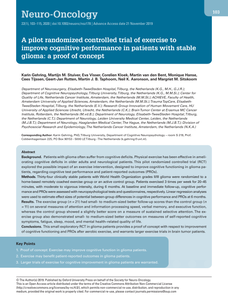Introduction: Gastroenteropancreatic neuroendocrine neoplasms (GEPNENs) are often diagnosed in an advanced stage. As the optimal sequence of therapy remains largely unclear, all treatment-related outcomes, including health-related quality of life (HRQoL) prospects, should be assessed according to patients' preferences. Methods: A targeted search was performed in PubMed and EMBASE to identify studies on treatment effect and HRQoL, measured using the EORTC QLQ-C30 tool, in patients with advanced, well-differentiated GEPNENs. Study quality was assessed, and meta-analyses were performed for global health status/QOL and tumour response. Results: The search yielded 1,322 records, and 20 studies were included, examining somatostatin analogues (SSA), peptide receptor radionuclide therapies (PRRT), chemotherapy, SSA-based combination therapies, and targeted therapies. Global HRQoL was stable, and rates for disease stabilisation were moderate to high across all treatments. Meta-analyses for global health status/QOL after SSA treatment were not significant (mean difference: –0.3 [95% CI: −1.3 to 0.7]). The highest pooled overall tumour response rate was 33% (95% CI: 24–45%) for PRRT. The highest pooled clinical benefit rate was 94% (95% CI: 65–99%) for chemotherapy. Conclusion: All treatments appeared beneficial for disease stabilisation while maintaining stable global health status/QOL. High-quality HRQoL reporting was lacking. HRQoL should be a central outcome next to well-established outcomes.
DOCUMENT

Prehabilitation trajectories contribute to improving lifestyle choices and influencing risk factors to reduce postoperative complications, the overall hospital stay and lower health care costs. This paper gives an overview of the best current evidence on the role, scope, added value and expertise of nurses during the prehabilitation trajectory of patients with GI cancer, consisting of relevant nursing diagnosis, interventions and outcomes within four specific domains. The methods used are literature searches that were performed between June 2022 and January 2023, with a final search on January 25th. The search strategy included four steps, following the Joanna Briggs Institute Manual. Two researchers contributed to the study selection process. The results were categorized according to the domains of multimodal prehabilitation. The Handbook of Carpenito was used to link the results to nursing diagnoses, interventions and nurse sensitive outcomes.
DOCUMENT

Abstract Background: Patients with glioma often suffer from cognitive deficits. Physical exercise has been effective in ameliorating cognitive deficits in older adults and neurological patients. This pilot randomized controlled trial (RCT) explored the possible impact of an exercise intervention, designed to improve cognitive functioning in glioma patients, regarding cognitive test performance and patient-reported outcomes (PROs). Methods: Thirty-four clinically stable patients with World Health Organization grades II/III glioma were randomized to a home-based remotely coached exercise group or an active control group. Patients exercised 3 times per week for 20-45 minutes, with moderate to vigorous intensity, during 6 months. At baseline and immediate follow-up, cognitive performance and PROs were assessed with neuropsychological tests and questionnaires, respectively. Linear regression analyses were used to estimate effect sizes of potential between-group differences in cognitive performance and PROs at 6 months. Results: The exercise group (n = 21) had small- to medium-sized better follow-up scores than the control group (n = 11) on several measures of attention and information processing speed, verbal memory, and executive function, whereas the control group showed a slightly better score on a measure of sustained selective attention. The exercise group also demonstrated small- to medium-sized better outcomes on measures of self-reported cognitive symptoms, fatigue, sleep, mood, and mental health-related quality of life. Conclusions: This small exploratory RCT in glioma patients provides a proof of concept with respect to improvement of cognitive functioning and PROs after aerobic exercise, and warrants larger exercise trials in brain tumor patients.
DOCUMENT
